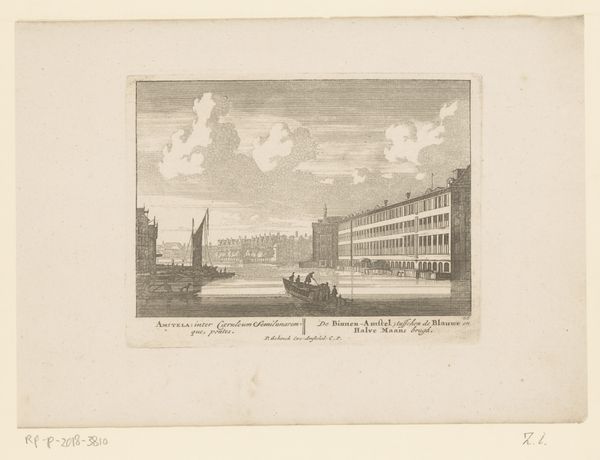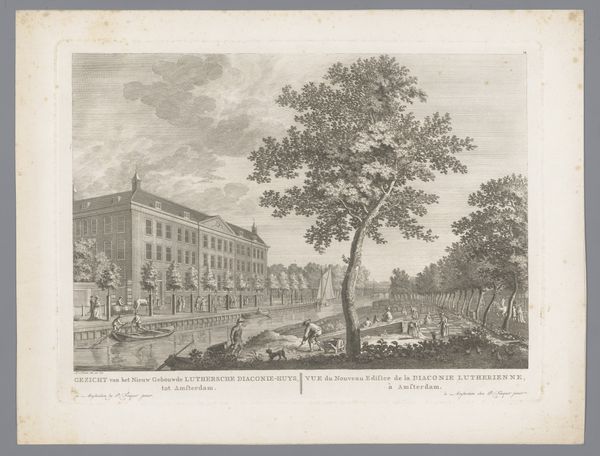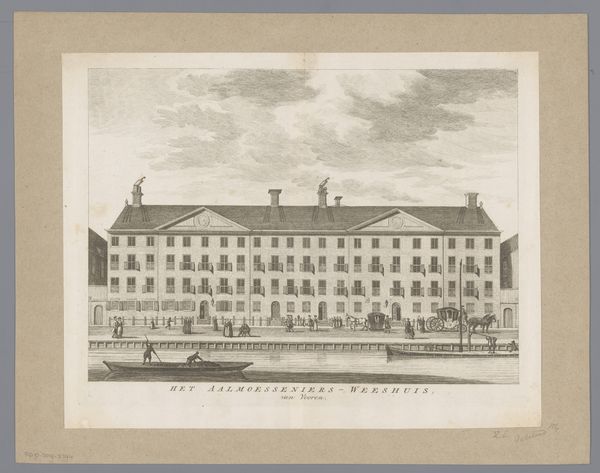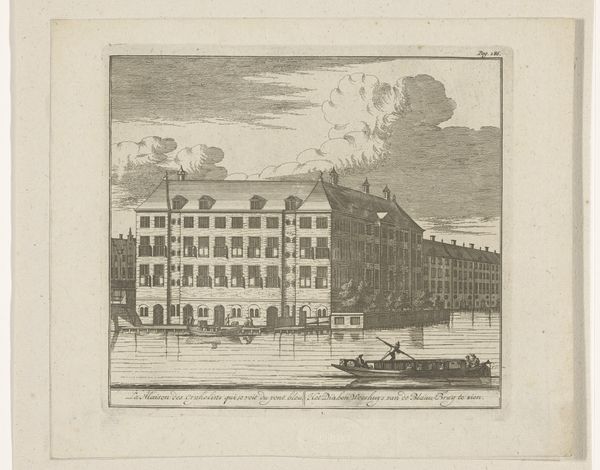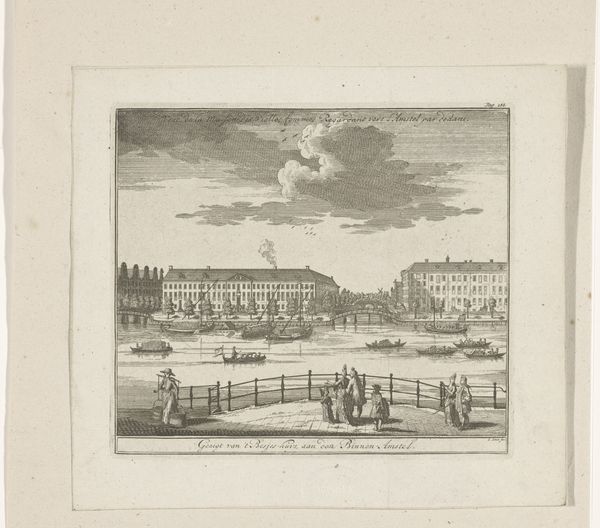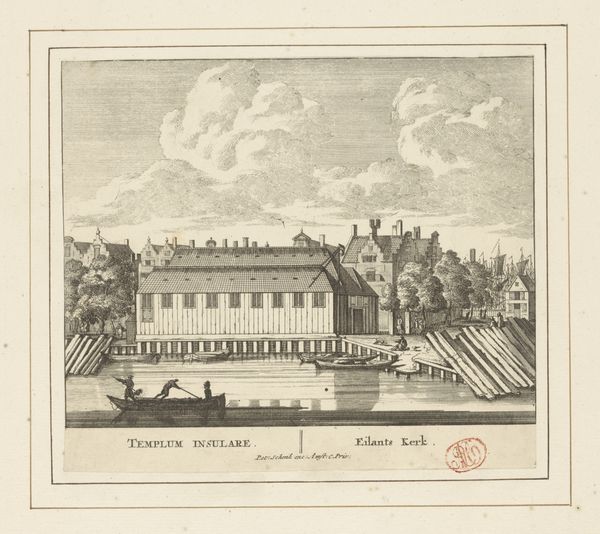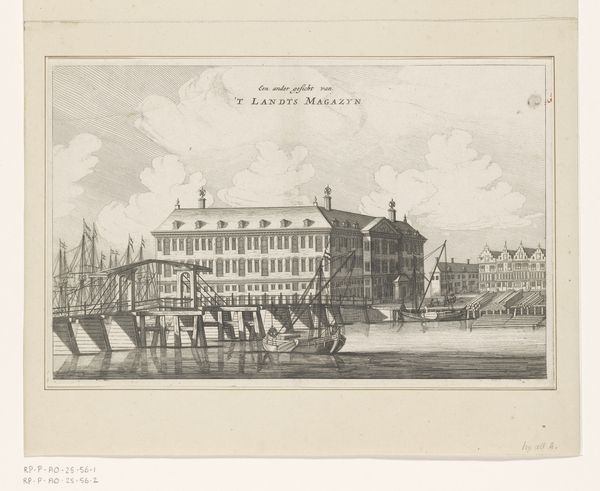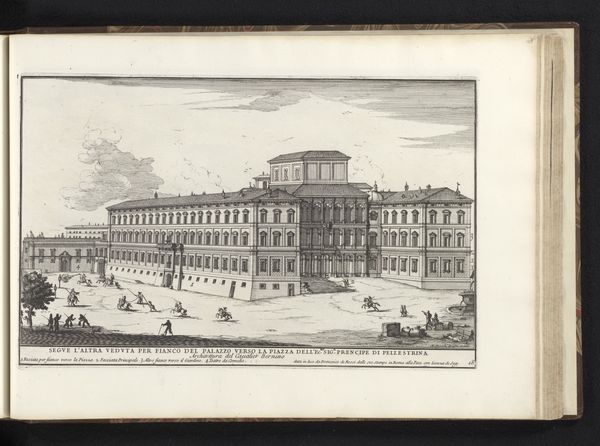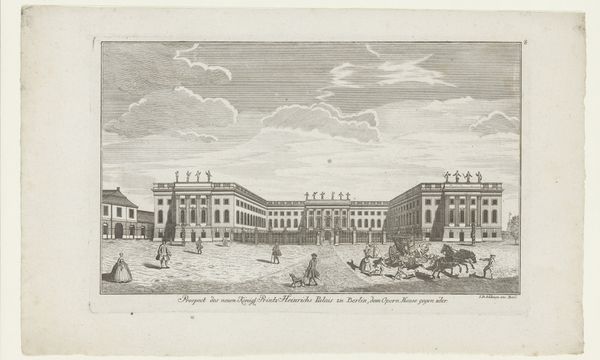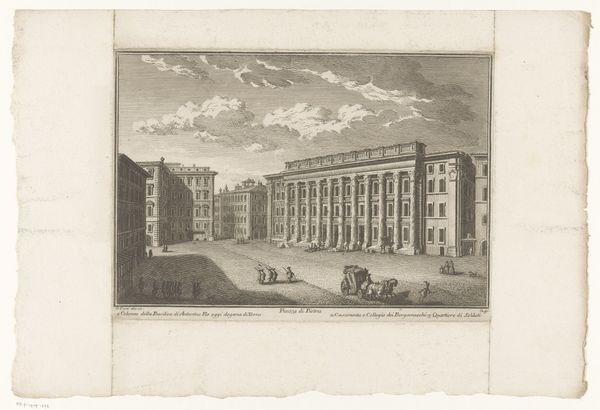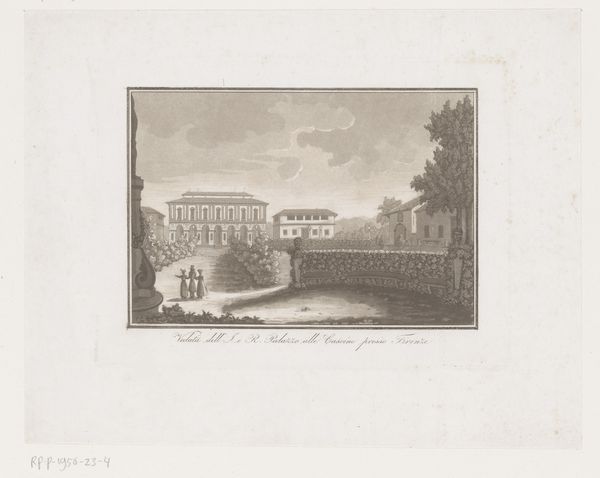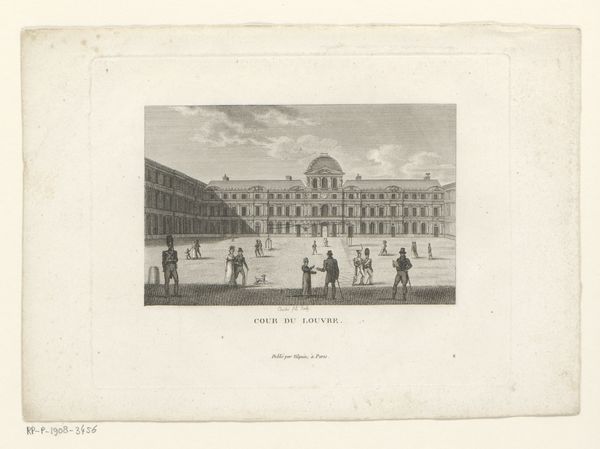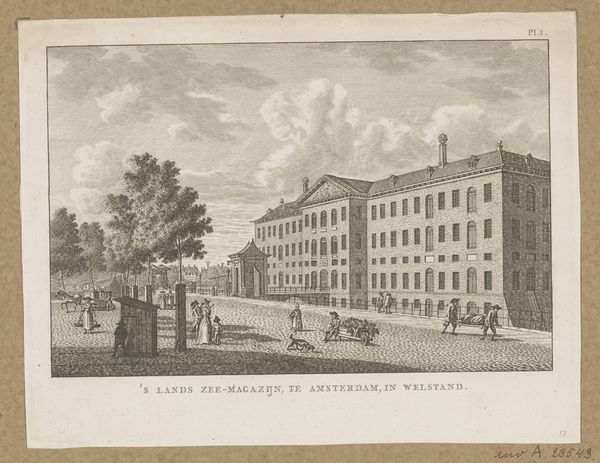
Gezicht op de Binnen-Amstel en het Diaconieweeshuis te Amsterdam c. 1700 - 1748
0:00
0:00
janismit
Rijksmuseum
print, engraving
#
dutch-golden-age
# print
#
landscape
#
cityscape
#
engraving
#
realism
Dimensions: height 171 mm, width 196 mm
Copyright: Rijks Museum: Open Domain
Editor: So, this is Jan Smit's engraving, "View of the Binnen-Amstel and the Diaconieweeshuis in Amsterdam," from around 1700 to 1748. The level of detail is just incredible for a print! It really captures a peaceful day on the canal, but there's also something a bit… austere about it. What's your take on this piece? Curator: Well, this image provides us with a fascinating lens through which to view 18th-century Amsterdam. This isn’t just a pretty picture; it’s a document embedded within the social and economic fabric of the Dutch Golden Age. Think about the prominence of the Diaconieweeshuis, the orphanage. What does it say about the city that this institution, a vital component of its social welfare system, is featured so prominently in the cityscape? Editor: That’s a good point. I was so focused on the composition that I didn’t really consider its role. Curator: Consider how prints like this one, affordable and relatively easy to reproduce, helped shape and disseminate ideas about Amsterdam itself. These images functioned almost as propaganda, shaping a civic identity, and influencing tourism by celebrating the city's organized affluence. What are your thoughts on its role as a public image? Editor: Hmm, a form of advertisement, I suppose. So it's presenting a carefully crafted picture to the outside world? Curator: Precisely! Smit is showcasing Amsterdam’s societal structure through its architectural landmarks. These serene images conceal the social dynamics at play in Amsterdam’s culture, as does most commercial marketing of place. How has your interpretation changed? Editor: I'm now aware that this print goes beyond simply representing the city as a place. I can appreciate the historical narrative being told. Thanks! Curator: And I’m reminded of how easy it is to overlook the social function of even the most seemingly benign art. It's a worthwhile point that many may miss!
Comments
No comments
Be the first to comment and join the conversation on the ultimate creative platform.
